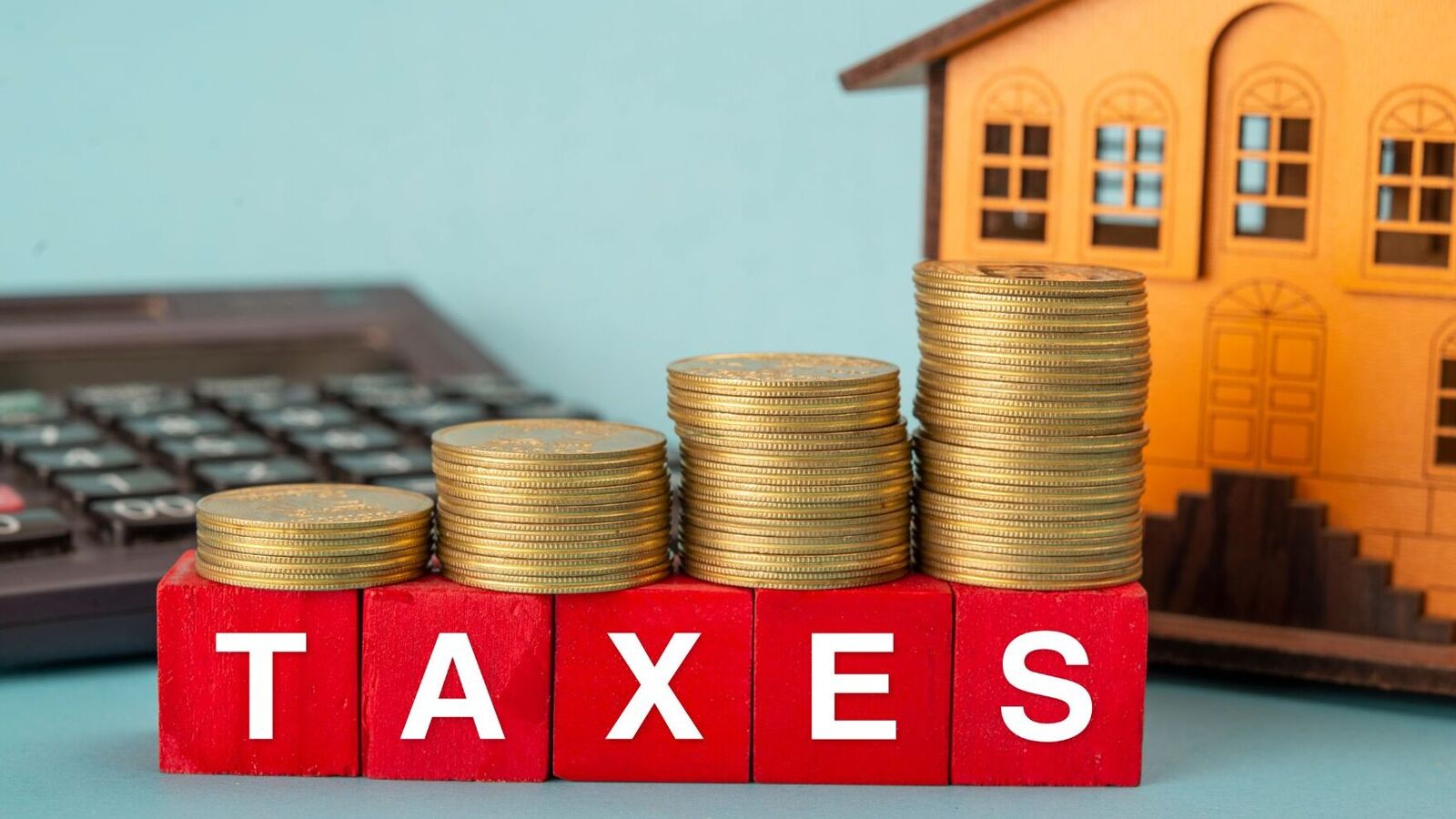They deducted the tax at source at the higher 31.2% rate (includes cess) applicable to non-resident Indian (NRI) sellers and submitted it to the tax authorities on time. However, they missed one additional step: filing an e-TDS return. Consequently, the couple, who did not wish to be named, was slapped with a penalty of ₹80,000.
Many individuals like this couple face penalties and interest charges each year due to missed steps in TDS compliance, often stemming from limited awareness.
After the TDS amount is submitted, the deductor has to file the return within the last date of the quarter in which TDS is deducted (the 31st of July, October, January and March). The penalty for this default is a severe ₹200 per day, capped at the TDS amount. The TDS rate in the case of NRI property sellers is quite high at 31.2%, which means the cap equivalent to the TDS amount for the ₹200 daily penalty doesn’t really help the tenant when the landlord is an NRI.
The couple was late in filing e-TDS by seven months, which added up to about ₹40,000 for both individuals. Since they bought the property jointly, both were required to deduct TDS and file the return separately. Hence, they both paid a combined penalty of ₹80,000 for this slip-up.
Individuals and HUFs that are not liable for tax audits were first brought under the purview of TDS in 2013 with the introduction of Section 194-IA that deals with tax deducted at source on the purchase of immovable property. Gradually, more sections on other types of payments were added to broaden the tax base.
Mint lists out some key TDS provisions that small taxpayers should be aware of to avoid paying penalties through their nose.
When the landlord is an NRI
Being a tenant to an NRI landlord is a full-time job with multiple compliances. The tenant has to get TAN (tax deduction and collection account number) and mandatorily deduct 31.2% TDS (includes cess; applicable surcharge also to be added) on the rent every month, regardless of the rent amount. It must be deposited to the Income Tax (IT) department by 7th of the following month using Form 27Q. Next, the tenant must file a quarterly e-TDS return.
“Once the return is filed, the tenant must generate and issue a Form 16A to the NRI landlord — this is the TDS certificate showing tax deducted and deposited,” said Ajay R. Vaswani, founder, ARAS and Company, Chartered Accountants.
“In contrast, when rent is paid to a resident landlord above ₹50,000 per month, the tenant can simply fill Form 26QC online, pay 5% TDS once in a year and be done — no TAN, no quarterly returns, no Form 16A. But for NRI landlords, even a simple rental agreement becomes a full-blown TDS compliance project for the tenant,” said Vaswani.
The tricky part is that the onus of verifying whether the landlord is a resident or non-resident is on the tenant. “The tenant should ask for a self-declaration copy. If it turns out later that the landlord was an NRI and tax wasn’t deducted properly, the tenant bears the brunt,” Vaswani said.
Also Read: New TDS rules for partnership firms: What you need to know
TDS on contractual work
When a person or entity engages a contractor for any type of work, TDS will be deducted under Section 194C and 194M.
194C is applicable to anyone engaging a contractor for construction, repair work or any other contractual services where the total payment is over ₹1 lakh in a year or a single payment is over ₹30,000.
Chirag Wadhwa, proprietor at Wadhwa Chirag & Associates, Chartered Accountants said for individuals and Hindu Undivided Family (HUF) engaged into business or profession, it is only when their previous year’s annual turnover exceeds ₹1 crore (in the case of business) or ₹50 lakh (for professionals) that they have to deduct TDS under 194C. “In the case of any other entity, even if there is no audit requirement, TDS under 194C applies,” he said.
It should be noted that TDS is to be deducted on oral contracts also, even when there is no formal written agreement.
“194C gets attracted to even mundane payments like advertisement, courier, house-keeping services, pest control and catering, among others,” Wadhwa added.
TDS rate is 2% when the recipient is an entity and 1% if it’s an individual.
194C compliance mainly affects small entities like housing co-operations, charitable institutions and small proprietor firms. For instance, a small housing committee with less than 20 apartments may not have a full-time CA. So the committee head will have to volunteer to get TAN, which is mandatory for 194C TDS, and deposit the TDS each time a payment is made to the several contractors they may hire, like security, horticulturist, for maintenance work etc.
What if a businessman is hiring a contractor to construct his personal house? In this case, section 194M comes in. TDS under 194M is for individuals and HUF who don’t fall under 194C.
“194M is applicable under two conditions – individual or HUF turnover is below the ₹1 crore/ ₹50 lakh threshold or even if they are liable for audit but are engaging a contractor for a personal purpose,” said Wadhwa.
So, a businessman building his own house comes under 194M as he/she fulfils the second condition.
Bhawna Kakkar, CA and founder, Kakkar & Company, Chartered Accountants says section 194C is well-known among businesses as CAs typically ensure TDS compliance during audits. However, Section 194M is less commonly followed.
“It applies even to salaried persons if they make high-value payments for professional or contractual services. Since it doesn’t require a TAN and often arises in personal transactions, awareness and compliance remain quite low.”
TDS under 194M is deducted at 5% rate if the aggregate amount of payments exceeds ₹50 lakh in a year. Some common contractual services that concern most individuals are constructing a house, hiring an interior decorator, paying a wedding planner or event manager, hiring a lawyer or any other professional, etc.
“The ₹50 lakh limit is per year and when it is breached, the payer has to deduct TDS even for the earlier payments (out of the subsequent payments to be released). He cannot deduct TDS from the first payment itself,” said Prakash Hegde, Bangalore-based chartered accountant.
Kakkar said for both 194C and 194M, each deduction requires a corresponding TDS return filing. “For 194C, each time TDS is deducted, you’ll need to file Form 26Q quarterly, reflecting all payments and TDS deducted. 194M is a challan cum statement deduction that is submitted along with TDS deposit. For this only PAN is sufficient for deductor as well as deductee.”
Also Read: Relying on rental income in retirement? Take these steps to protect yourself.
The cost of non-compliance
Failure to deduct TDS carries severe penalties. A 1% monthly interest applies for non-deduction, 1.5% interest when TDS is deducted but not deposited and for delays in filing e-TDS return or challan cum statement, ₹200 per day, capped at TDS amount, until the return is filed. These penalties apply to all TDS provisions.
TDS non-compliance is a running risk as the interest and penalties are slapped only when the income tax (IT) department flags a default.
“With the income tax department increasingly relying on data from various sources, including the Statement of Financial Transactions (SFT) that captures cash receipts above ₹2 lakh, such payments can easily be flagged, potentially leading to demand for tax along with interest and penalty,” said Kakkar.
However, in the case of NRIs, the consequences of non-compliance are more severe. “In case of non-compliance, the tenant could become “assessee-in-default”. This means the tenant could be forced to pay the entire TDS amount out of their own pocket, even if the rent was already paid out,” Vaswani explained.
Over and above the penal interest and ₹200 daily fee for non-filing of return, tenants to NRI landlords can also be face additional penalty up to the full amount of TDS under Section 271C and even prosecution under Section 276B for willful default when the TDS is deducted but not deposited with the government, as per Vaswani. “Unless the landlord later pays full tax and files a return, the burden stays on the tenant.”
Hegde said the ₹200 per day fee for non-filing default, especially, is quite an expensive one. He said property buyers quite often cough up this fee for many of the previous instalments in cases where they pay several installments when buying from a builder.
“When buying a house, under Section 194IA, the buyer has to deduct 1% TDS on the total amount if it exceeds ₹50 lakh or more. Now, in case of several instalments, the buyer has to deduct and deposit the same using a challan-cum-statement of TDS in Form 26QB for each installment, which the builders may not inform buyers. Say, if there are eight instalments over three years and the buyer doesn’t realise until the final instalment, the ₹200 daily fee on the first instalment will add up over three years, capped at the TDS amount. The same will apply to all seven instalments missed.”
In the first such instance, the tax department recently sent notices to many tenants claiming HRA for not deducting TDS. It is expected that the IT department could impose large-scale enforcement for other TDS provisions too in the coming years.
Also Read: Claimed HRA but skipped TDS on rent? The taxman wants answers









Leave a Reply